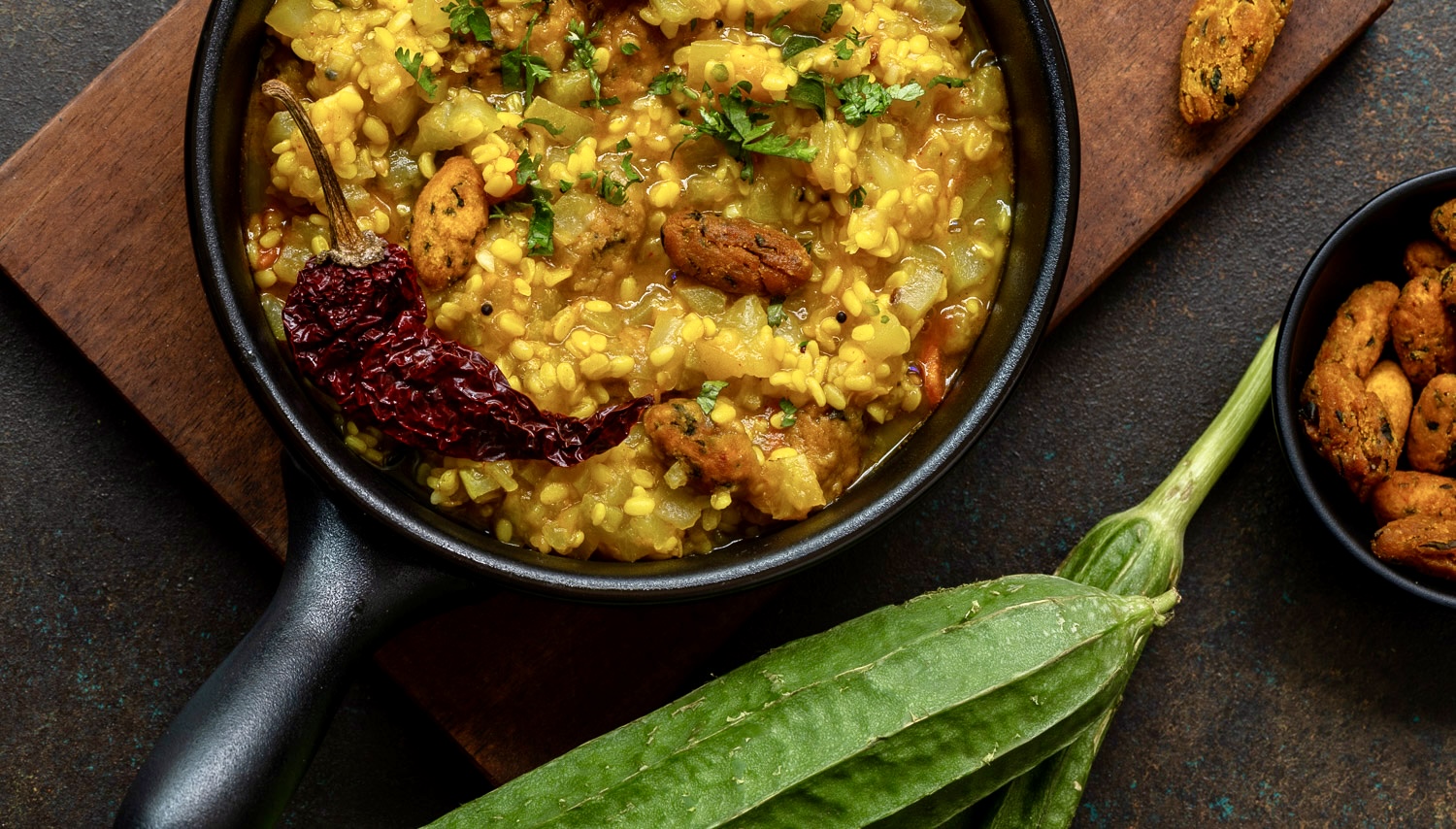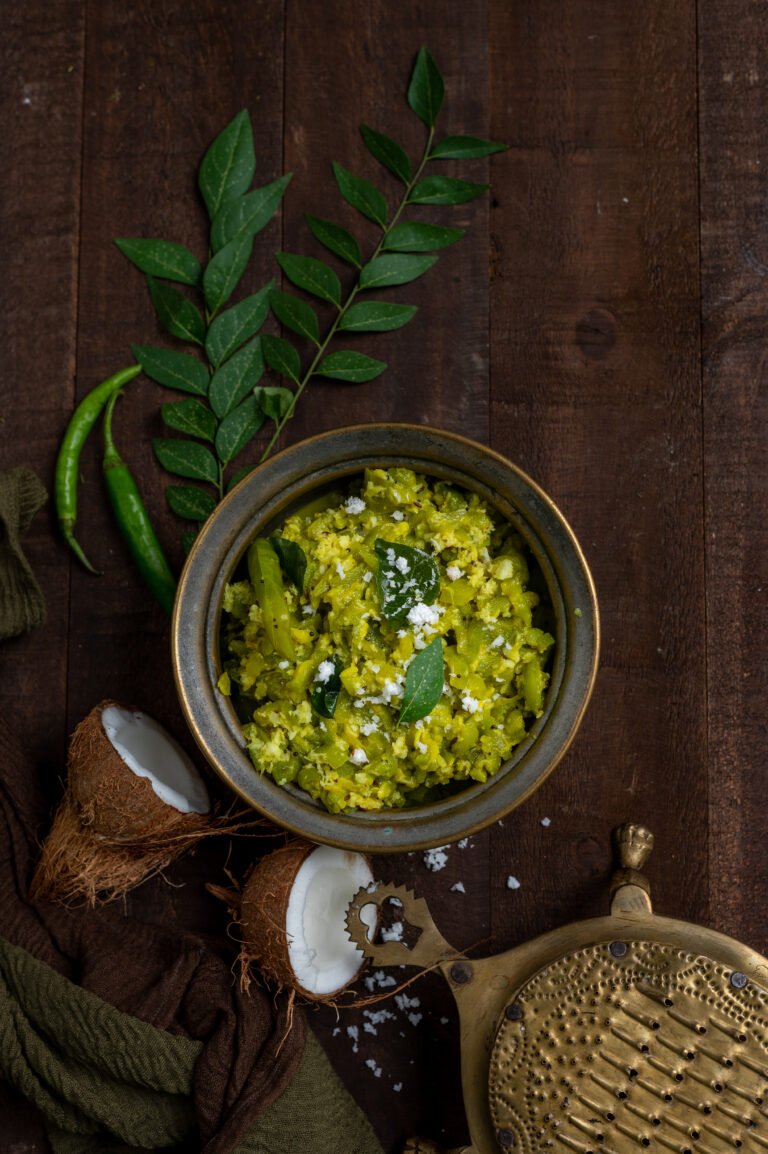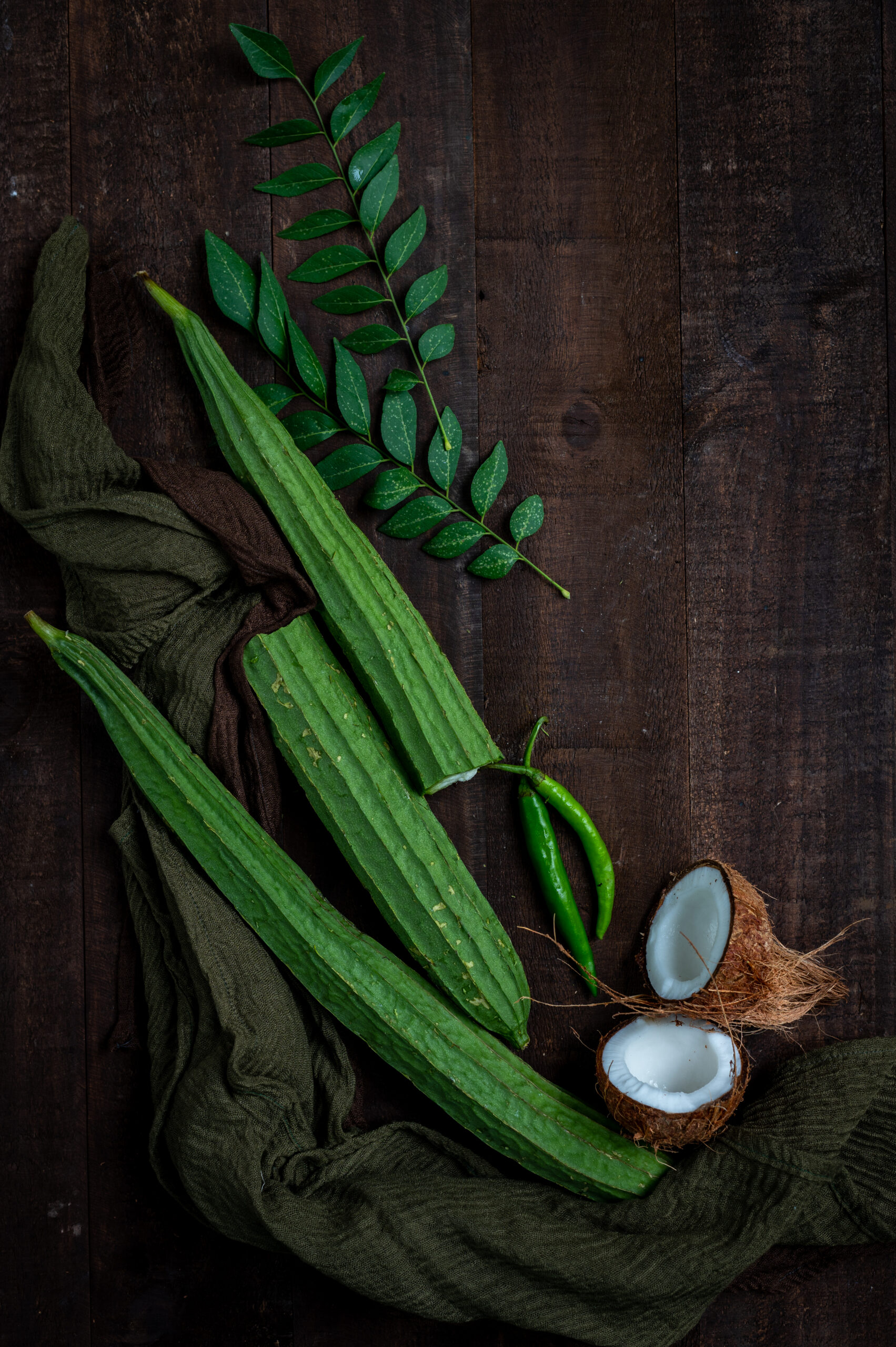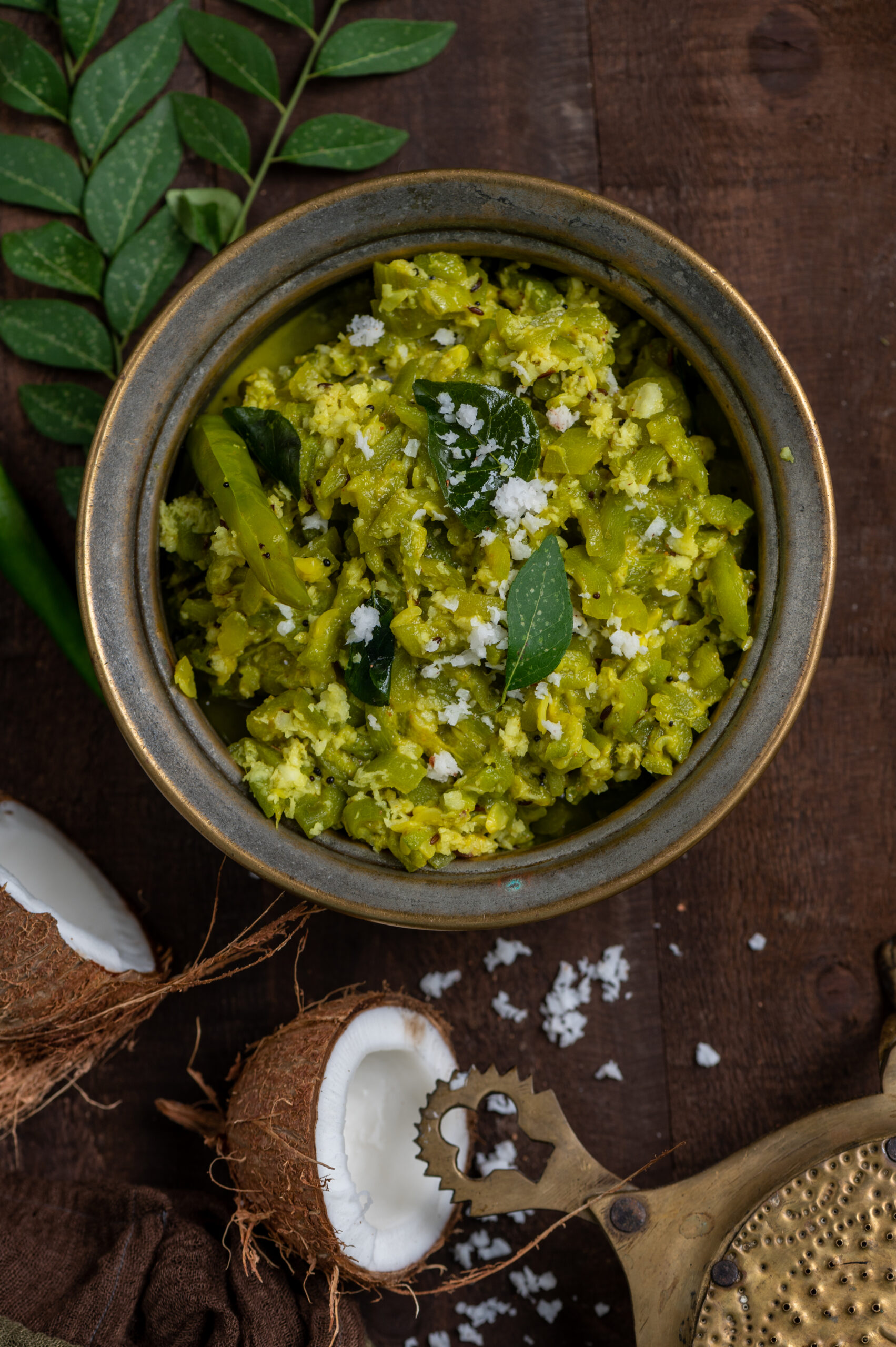Ridge gourd, a water-based vegetable known in Gujarati as “turiya”, happens to grow abundantly all year-round in Tamil Nadu. Here, it is called “peerkanga”. While it is a seasonal vegetable in other parts of the country, it seems to be available locally almost all the time. This means that I get to eat turiya muthiya shaak, a Gujarati dish that is among my favourites, almost whenever I want to. It’s an especially delicious way to consume a nutritious vegetable, and I think you’ll also enjoy trying it out.
The weather here in Chennai tends to be hot, hotter, monsoon or briefly pleasant – and ridge gourd grows abundantly in hot weather, which is why it’s easy to find locally. We have it at least twice a week in a few preparation styles. I have shared one recipe before, cooking it in coconut oil and with grated coconut, in the regional way. Right now, as the temperature rises, water-based vegetables are a must in order to keep our bodies better hydrated, and I strongly encourage you to include ridge gourd and similar ingredients in your diet too.
If you have explored my earlier recipe for ridge gourd, I would liken the addition of grated coconut there to the addition of muthiya here. Muthiya are small fried dumplings. Tiny and round, they could be likened to miniature vadas or bhajis. They are made with chickpea flour, and deep-fried before being added to the cooked vegetable. They soften up in the gravy, and add a great deal of flavour to it. Ridge gourd is itself plain-tasting, so seasonings and additions like muthiya in Gujarati cuisine or coconut in Tamil or other South Indian cuisines please the palate. I’d certainly be curious to know about more ways to enhance ridge gourd dishes.
Here, I have opted to make the muthiya healthier by incorporating methi, or fenugreek, which also imparts its own flavour to the dish. By the way, you can also prepare the muthiya a day in advance in order to save time on the day of serving. In fact, muthiya by itself can be a tasty snack. Here, size does matter: smaller ones will be added to a vegetable gravy like this one, whereas they need to be made bigger if they are to be eaten as snacks. The method, however, is essentially the same.
When I was growing up, my mother would often make a tin of bigger muthiya and we would have it with chai. When we had turiya muthiya shaak for lunch or dinner, my sister and I would fight over the deep-fried, deliciously soaked muthiya. We never cared much for vegetables, although our mother drilled it into us that they are good for us.
Now that we are older and wiser and mothers ourself, we value and appreciate how strict she was with ensuring that we ate them whether we liked them or not. This system is passed from generation to generation. Now, with adult children of my own, I am all the more aware that children do follow their parents’ eating habits – if not when they are growing up, then eventually. To all the young parents reading this, I want to say: show your kids how to eat healthy, eat clean and to respect food through your own example, not just with words. It makes a difference. The same goes for all our traits. If you want your kids to become caring individuals, you have to show them what it’s like to be one yourself. As parents and elders in a family, we need to be conscious about how generations after us adopt our habits and even our nature. Probably the simplest way to embody this knowledge well is by teaching them about the goodness of fruits and vegetables in your daily intake. As they grow, you will see the effect, even if it’s difficult to convince them right now.
In fact, a part of the inspiration behind my sharing this recipe is that I visited my son’s office space the other day, where as mentioned in another post, a small garden is run by the factory workers. There was fresh organic ridge gourd being harvested, and that’s what I brought home to prepare for us all, even though I grow some on my terrace too. I was glad to see my son’s support for this venture, and I hope that the lessons I inculcated in him about eating well continue to yield good things.
All these years since our childhood later, my sister and I both make, serve and eat lots of delicious vegetables – every day. We certainly aren’t fighting over muthiya anymore. In fact, I grew to love turiya muthiya shaak, turiya and all, and my sister happens to prepare it better than I do. She has long stopped asking what I want to eat when I visit her in Mumbai, having gotten familiar with my cravings over the years. Turiya muthiya shaak is invariably on the table at some point during my stay, and I relish it all the more because it is prepared by her.
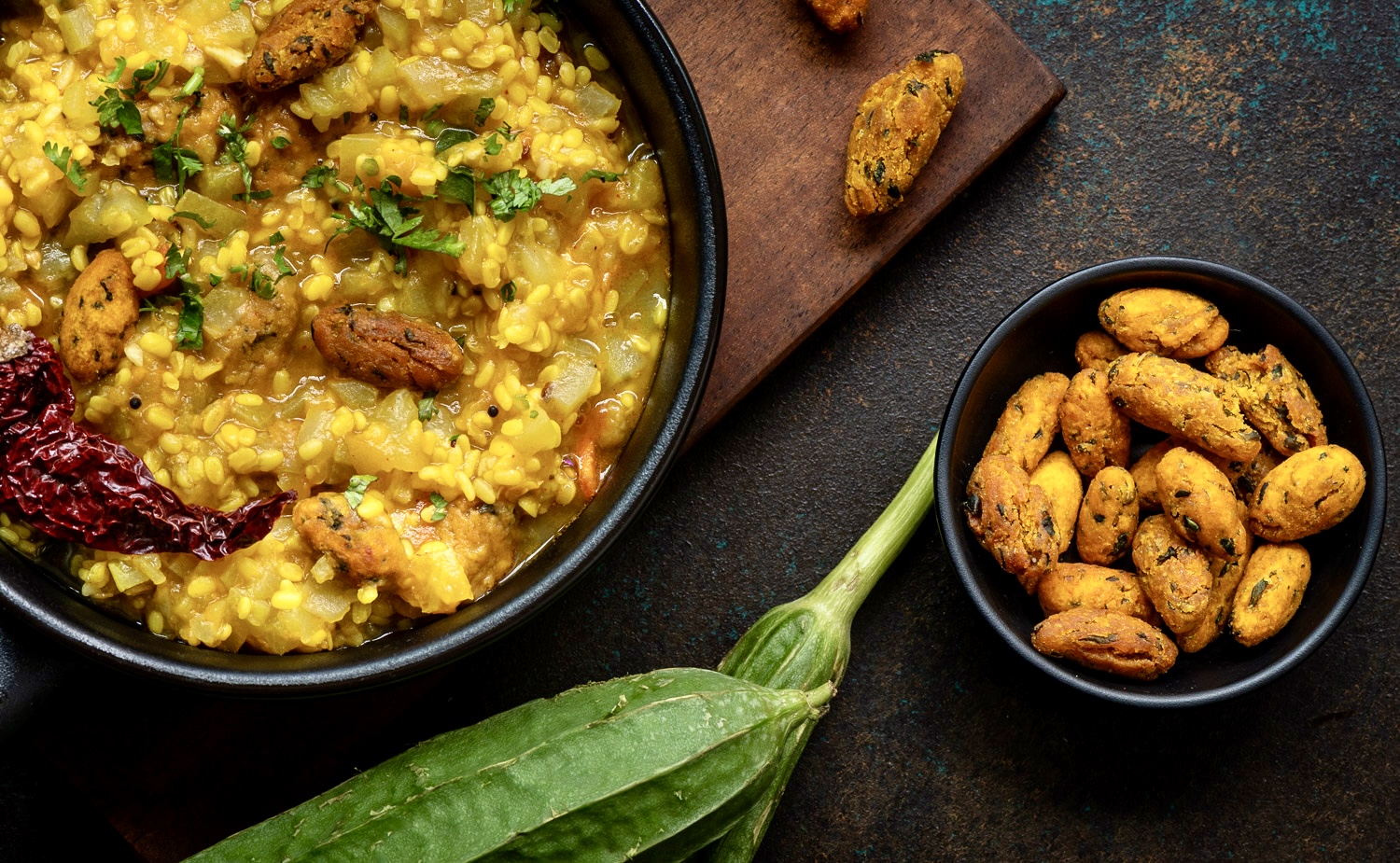
Turiya Muthiya Shaak
(Serves 2-4)
Methi Muthiya
1 cup methi leaves (fenugreek leaves; finely chopped and rinsed well)
¼ tsp asafoetida
Salt to taste
½ teaspoon red chilli powder
¼ teaspoon turmeric
2 teaspoons sugar
Juice of 1 lime
A handful coriander leaves
1 teaspoon ginger (grated)
¼ cup whole wheat flour
1 full cup besan (chickpea flour)
2 tablespoon oil
Water as required
In a bowl, add the methi leaves and all the ingredients except the flours and the oil. Massage well.
Then, add the flours and make a dough. Sprinkle water as required. Add more besan if required.
Add the oil and massage well. Make small, elongated balls (as shown in the photographs), using more water if required to make them tight.
Deep fry these on a medium flame until golden. Set aside.
Turiya Shaak
4 cups chopped ridge gourd
¼ cup yellow mung dal
½ teaspoon turmeric
1 cup water
Salt to taste
1 small tomato (chopped)
1 teaspoon dhaniya powder (coriander powder)
1 green chilli
2 tablespoons oil
½ teaspoon mustard seeds
Soak the mung dal until soft. Set aside.
Peel and chop the ridge gourd into cubes.
Heat the oil in a small pressure cooker. Add the mustard seeds. Once they splutter, add the dal and the chopped gourd along with the water. Next, add the turmeric. Mix and cook for 1 whistle, or until the dal is tender.
Allow to cool, then open the cooker.
To put together your turiya muthiya shaak, take another kadai. Add a little oil and add more mustard seeds, the green chilli and the tomato and stir until the tomato pieces are tender. Now, add the vegetable and dal mixture to this. Allow some amount of gravy.
Finally, add the muthiya and allow to soften. Cook for a few minutes. Adjust the salt if required.
Remove from the flame and serve with rotis or rice.
This blog has a large and growing selection of traditional Gujarati recipes – sometimes authentic, sometimes with a twist – and I hope you’ll take some time to explore more of them!
